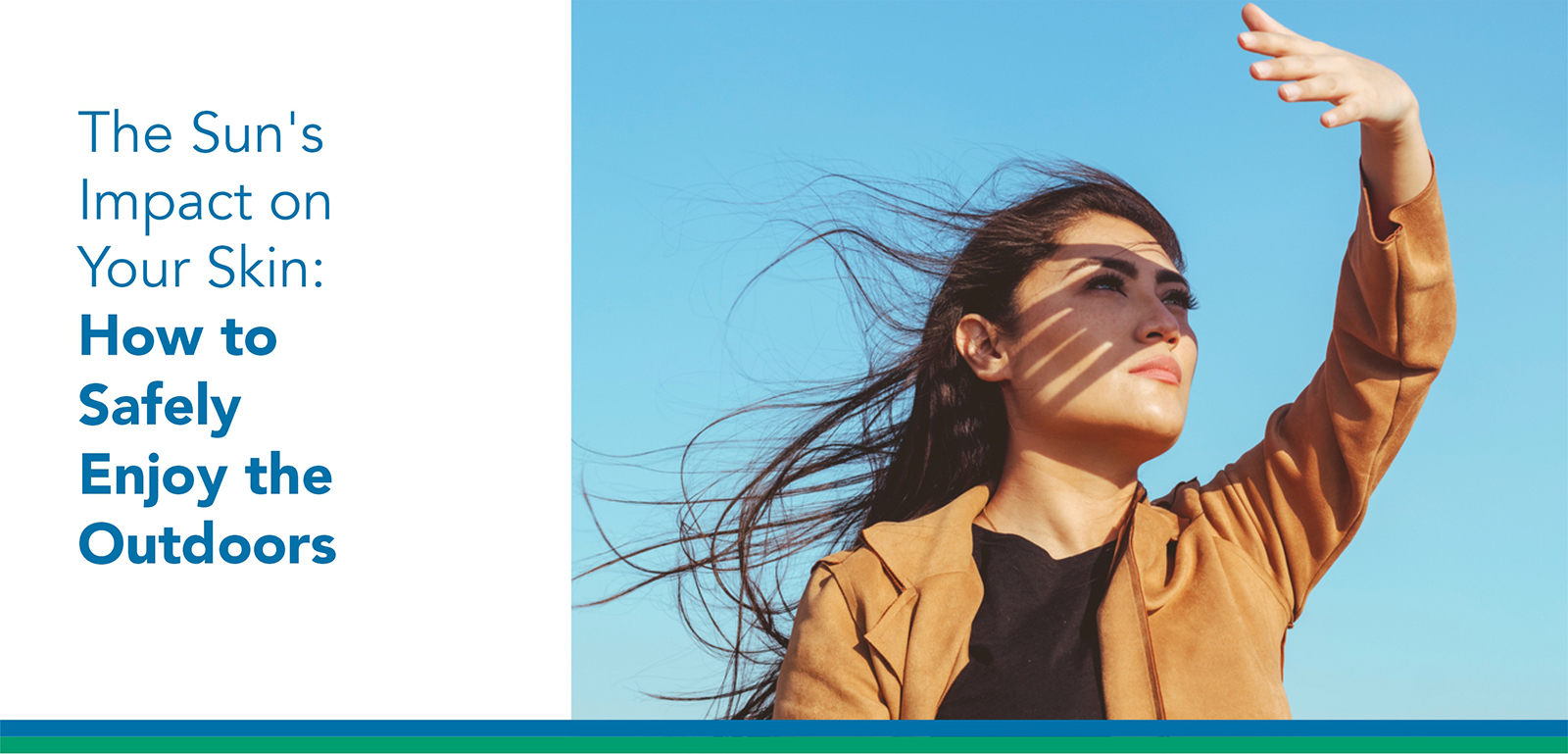The Sun's Impact on Your Skin: How to Safely Enjoy the Outdoors

Ah, the great outdoors—a world of endless adventures and rejuvenation. Basking in the warmth of the sun can be truly blissful, but it's essential to understand the intricate dance between the sun's rays and your precious skin. In this sunlit exploration, we will delve into the art of safely enjoying the outdoors while keeping your skin radiant and healthy.
The Sun and Your Skin: A Complex Relationship
Your skin, the body's largest organ, is a remarkable guardian. It shields you from the harsh elements, microbes, and harmful UV radiation from the sun. However, the sun, with its life-giving energy, can also be a double-edged sword.
Ultraviolet (UV) radiation is the sun's secret weapon. It comes in two forms: UVA and UVB, each with its own agenda. UVA rays, also known as "aging rays," penetrate deep into the skin, leading to premature aging, fine lines, and wrinkles. UVB rays, on the other hand, are the notorious "burning rays," causing sunburn and playing a significant role in skin cancer development.
So, how can you revel in the sun's warmth without compromising your skin's well-being?
Sunscreen: Your Skin's Shield
Enter sunscreen—a superhero in a bottle. Sunscreen is your first line of defence against the sun's relentless rays. It contains UV filters that absorb or reflect the harmful radiation, sparing your skin from the damage. The use of sunscreen is a non-negotiable step in your outdoor skincare routine.
When selecting a sunscreen, opt for one with a high SPF (Sun Protection Factor). SPF measures a product's ability to shield your skin from UVB rays. Dermatologists at Sterling Hospitals, Rajkot recommend using a broad-spectrum sunscreen with an SPF of 30 or higher.
Remember to apply sunscreen generously to all exposed areas of your body, including those often-overlooked spots like the ears, neck, and the back of your hands. Re-apply every two hours, especially if you're swimming or sweating.
Fashion Forward: Sun-Protective Clothing
Besides sunscreen, fashion can also be your ally against the sun. Sun-protective clothing is gaining popularity for its ability to shield you from UV radiation while keeping you stylish. These garments are woven with specialized fabrics that have a high UPF (Ultraviolet Protection Factor). UPF measures a fabric's ability to block UV radiation, like SPF for sunscreen.
Dermatologists often suggest incorporating sun-protective clothing into your wardrobe. Wide-brimmed hats, long-sleeved shirts, and sunglasses with UV protection can elevate your sun safety game. It's like dressing up for a fashionable duel with the sun!
Timing is Everything
If you're planning an outdoor escapade, timing matters. The sun's intensity varies throughout the day, peaking around midday when UV radiation is at its strongest. To minimize your exposure to harmful rays, consider outdoor activities during the early morning or late afternoon when the sun is gentler on your skin.
Remember, even on cloudy days, UV radiation can penetrate clouds, so don't underestimate the sun's power.
Shade Seeker
When the sun's heat becomes unbearable, seek refuge in the shade. Trees, umbrellas, and canopies can provide excellent shelter from the scorching sun. Not only does this keep you comfortable, but it also reduces your skin's exposure to harmful UV radiation.
Hydration: Skin's Best Friend
Your skin craves hydration, especially when you're under the sun's unrelenting gaze. Drinking ample water keeps your skin hydrated from within. It helps maintain its elasticity and resilience, making it less prone to damage from UV radiation.
Post-Sun Pampering
After a sun-soaked day, your skin deserves some extra care. A soothing dermatologist approved after-sun lotion can work wonders. These lotions often contain ingredients like aloe vera and antioxidants, which help repair sun-damaged skin and alleviate redness and irritation.
Sun Safety for All Ages
Sun protection is a lifelong commitment. Teach your children the importance of sun safety from a young age. Children have delicate skin that is more susceptible to UV damage. Encourage them to wear sunscreen, protective clothing, and seek shade during outdoor activities.
Skin Types Matter
Understanding your skin type is crucial in tailoring your sun protection routine. Individuals with fair skin are more vulnerable to UV damage and should take extra precautions, including higher SPF sunscreen and frequent reapplication. Those with darker skin tones are not immune to the sun's effects either, as they can still suffer from sunburn and skin damage.
Regular Skin Checks
Lastly, make regular skin checks a habit. Keep an eye out for any unusual moles or changes in your skin's appearance. If you notice anything suspicious, consult a dermatologist immediately for a thorough examination. Early detection of skin issues can be a lifesaver.
In conclusion, the sun is both a friend and foe to your skin. By adopting a proactive approach to sun safety, you can savour the joys of the outdoors without compromising your skin's health. Remember to wear sunscreen, don sun-protective clothing, seek shade, and stay hydrated. Your skin, the body's steadfast guardian, will thank you for your thoughtful care. Also, if you face any skin issues you can consult any of the Dermatologist in Rajkot regarding your skin problems.
So, as you embark on your next outdoor adventure, embrace the sun's warmth while keeping its potential harm at bay. Your skin, after all, deserves nothing less than the best protection and care.







